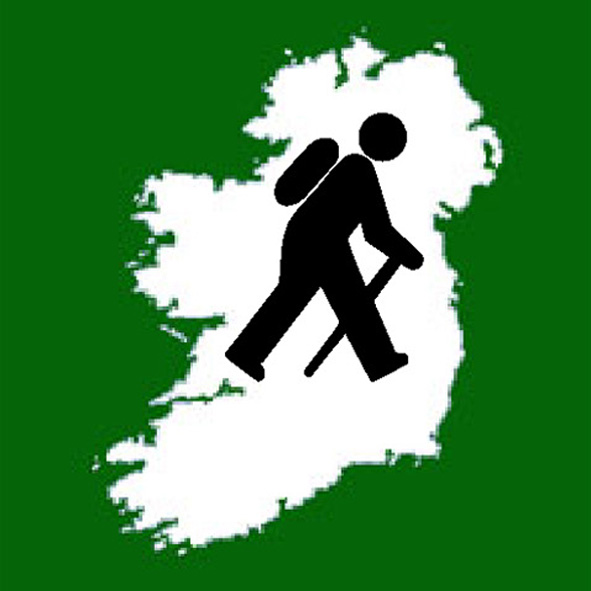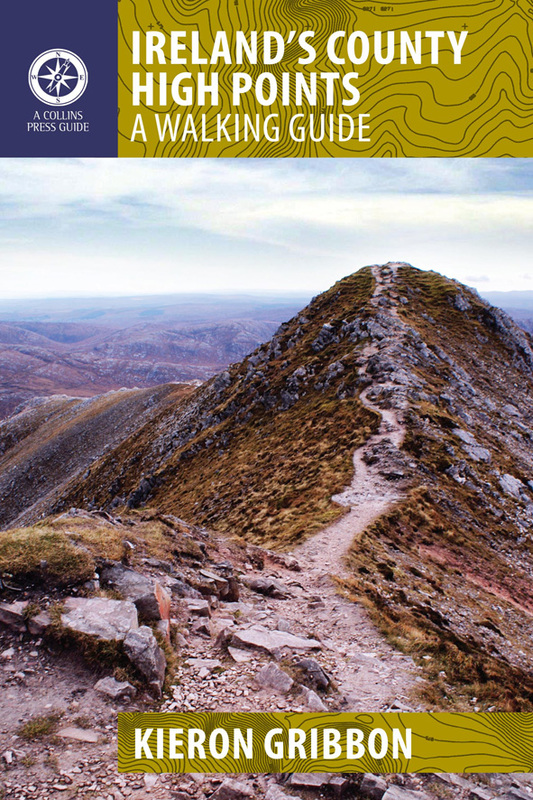The Accessible High Points (Level 1) is a sub-list of the official list of Ireland's major geographical High Points. Compiled by Kieron Gribbon, and first published on 24th June 2017, the Accessible High Points (Level 1) is the first-ever High Points or summits list created specifically for people under the age of 12 years old. It is also the first list of "accessible" Irish summits ever to be published (yet another first for High Point Ireland!). Along with the Accessible High Points (Level 2) sub-list, it is part of High Point Ireland's wider strategy to introduce young people to the sports discipline of Highpointeering and to provide a structured means of personal progression.
The Accessible High Points (Level 1) sub-list comprises 10 Irish High Point locations which meet the following criteria:
Please note that the MountainViews community announced in their September 2017 newsletter (circulated on 5th September 2017) that they are considering creating an "accessible summits" list of their own. Considering that the Accessible High Points (Level 1) was first published just two months earlier, it would appear likely that High Point Ireland can take the credit for being the inspiration behind the idea for MountainView's potential new list.
The Accessible High Points (Level 1) sub-list comprises 10 Irish High Point locations which meet the following criteria:
- Has an approach route suitable for people under the age of 12 years old and accompanying younger siblings in prams, buggies, etc.
- Has an approach route suitable for cyclists of all ages.
- Has no known access issues in terms of permission or physical obstacles.
Please note that the MountainViews community announced in their September 2017 newsletter (circulated on 5th September 2017) that they are considering creating an "accessible summits" list of their own. Considering that the Accessible High Points (Level 1) was first published just two months earlier, it would appear likely that High Point Ireland can take the credit for being the inspiration behind the idea for MountainView's potential new list.
Special notes for parents
Parents can encourage their children to get involved in Highpointeering by introducing the sport as a family adventure activity. To facilitate this, we have created the Accessible High Points (Level 1) list as the perfect mini-challenge for walkers under the age of 12 years old.
Parents can accommodate their children’s progress by integrating the Accessible High Points (Level 1) challenge into family travel plans. The list comprises 10 summits which can be ascended along well-surfaced access tracks. These buggy-friendly routes can accommodate younger siblings who are not walking yet themselves.
Participant safety is our top priority. The locations we have included in the Accessible High Points (Level 1) list all have well-surfaced access routes. The following recommendations apply to these particular routes:
Parents can accommodate their children’s progress by integrating the Accessible High Points (Level 1) challenge into family travel plans. The list comprises 10 summits which can be ascended along well-surfaced access tracks. These buggy-friendly routes can accommodate younger siblings who are not walking yet themselves.
Participant safety is our top priority. The locations we have included in the Accessible High Points (Level 1) list all have well-surfaced access routes. The following recommendations apply to these particular routes:
- In your group, the number of children under the age of 12 years old should not be more than the number of adults. In other words, every child under 12 should be closely supervised by at least 1 adult at all times.
- Be aware of cross-slopes where the ground falls off to the side of the access route. An alert adult should always be positioned between a child and adjacent downslopes.
- If bringing a child in a buggy, always strap him / her in. We strongly advise you to connect yourself securely to the buggy using a strong tether. Even on a gentle slope, a freewheeling buggy can accelerate away from you very quickly. Always have an alert adult on the downslope side of the buggy. On ascent, this will be the pusher. On descent, a second adult should walk a short distance in front.
- Check the start point for each Accessible High Points (Level 1) walk on Google Streetview. This will give you a better idea of any potential obstacles which may need to be negotiated. If bringing a child in a buggy, please be aware that it may be necessary for 2 adults to lift a buggy over such obstacles.
- Please note that the access road may end short of the High Point location itself. In these cases, depending on the terrain, it may be necessary to remove your child from their pushchair and carry him / her the final short distance to the top. Alternatively, one adult could stay behind to mind the child who is in the pushchair while the other adult(s) in the group accompany the older walking child(ren) to the top.
- The above notes are only recommendations. Parents must make their own risk assessments on site and use their own judgement to ensure their own safety and the safety of their children.
Our logging partner
We invite you to log your Accessible High Point (Level 1) location visits with Peakhunter, our official logging partner. Peakhunter is the world's No.1 peak-logging platform (www.peakhunter.com). The Peakhunter app allows you to create a log entry by simply pressing a button on your smartphone while you are physically present at a High Point location. Download the app here.
Find out more about creating Peakhunter log entries...




